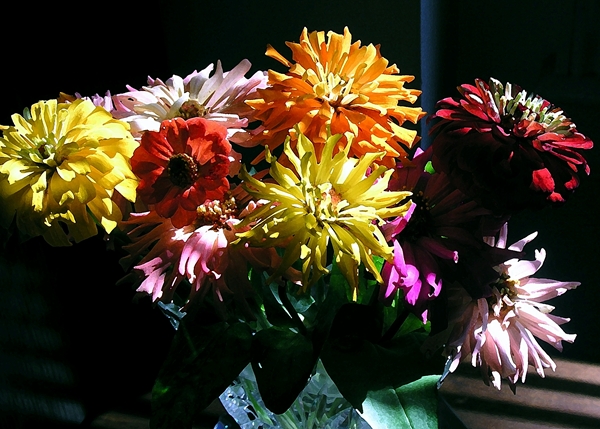Drawing inspiration from such disparate works as Ingres paintings from the early 19th Century, a poster I remember seeing all over New York 40 years ago for a Joffrey Ballet production, and those pulsating hippie light shows of the Sixties, I shot all these photos in a single session. I wanted in each to merge my model with a projected image — but do it my way, no Photoshop — to create a modern image with classic beauty and some sense of mystery. Perhaps at first glance one thinks “How was that done?” but the perceptive viewer will see the images for what they are: photographs made with photographs. And proud photographs, not paintings.
It was a delight to find when they were exhibited in the 2011 edition of curator Tina Maneca’s Exquisite Corpse, an October show that opened during the Jersey City Artists Studio Tour, that each photo was a favorite of at least one visitor to the show. Of course some in the series drew positive comments from many people, but it was nice to know that each had at least one admirer. All were printed on metal, with glossy finish and ready to hang with no frame, and “In Her Realm,” below, is my largest such print to date — 45 inches wide.
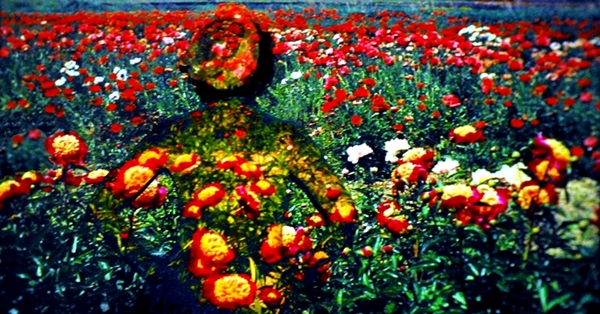
Below is “Recognition.” It’s printed 24 by 24.
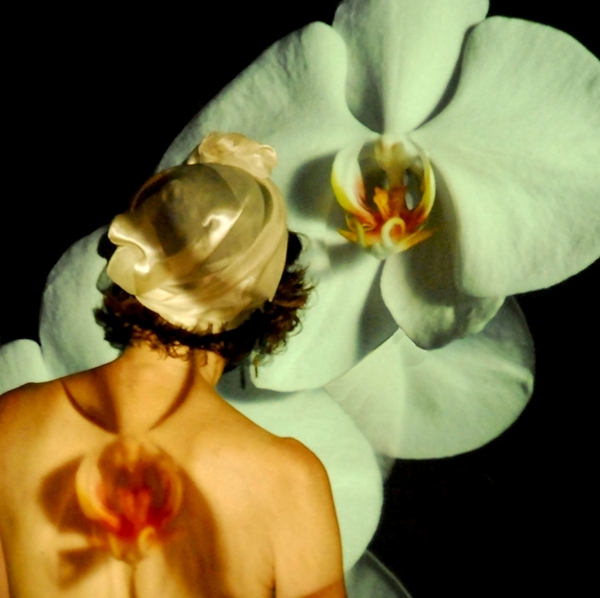
“Sosei,” below, is also 24 by 24.
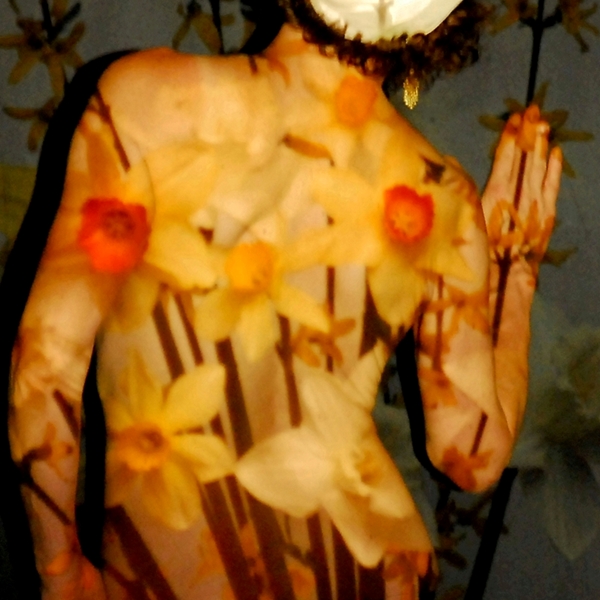
Below is “In the Garden,” printed smaller, perhaps 15 inches wide.
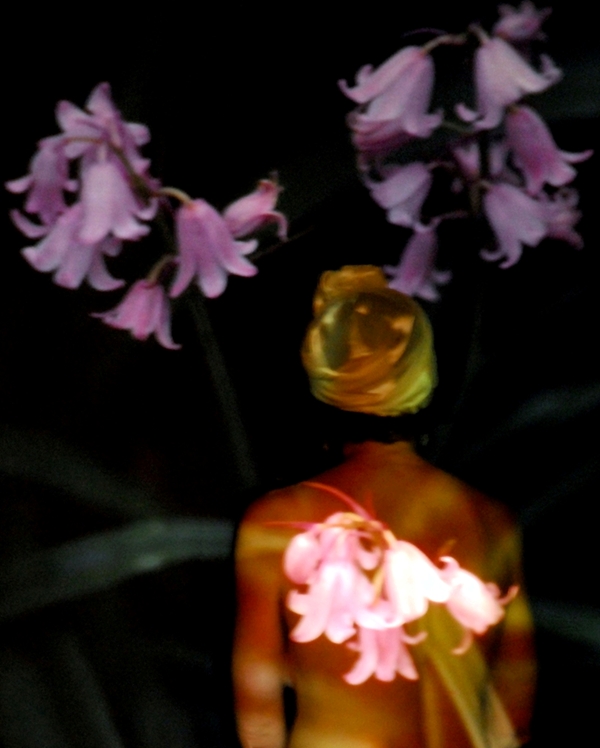
“Forest Dawn” was not seen in Exquisite Corpse, as the print was damaged by a worker taking down the previous show in the space.
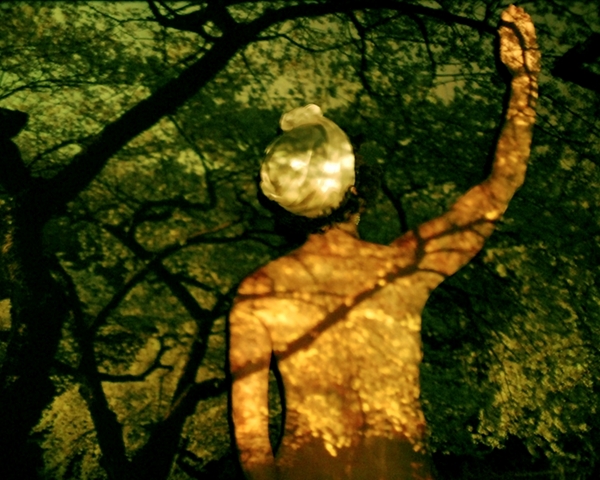
Fire? Ecstasy? Cherry blossons? Wagner’s surging music? All there. “Greeting Spring” is large, about 36 inches wide.
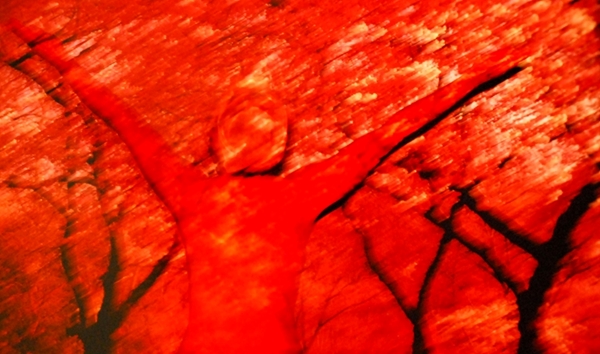
“Aspiration” is perhaps 20 inches wide.
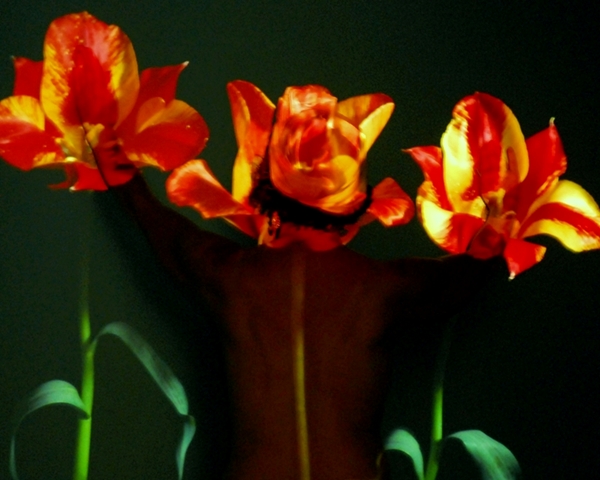
“Discovery” is about 20 inches wide, too.
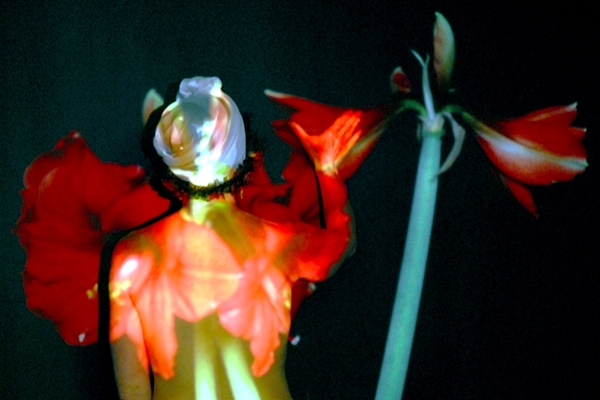
“Peace” is 20 inches square, and was used in one of the many 3-artwork assemblages that curator Tina Maneca put together.
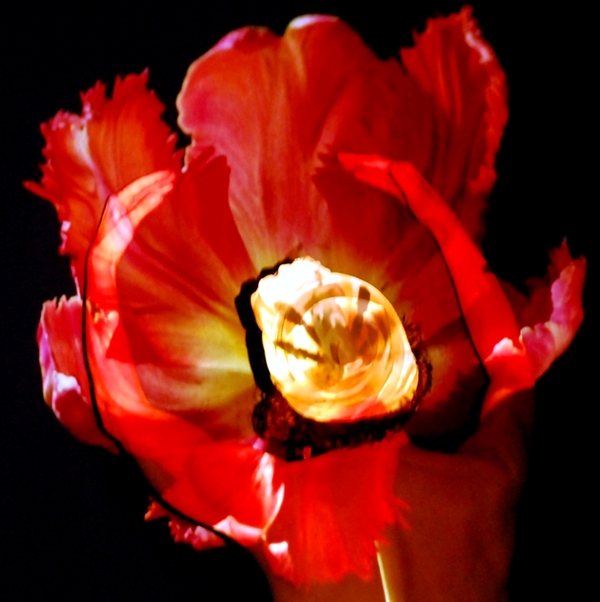
Below is “Peace” and the works shown with it. Each assemblage in Exquisite Corpse has a “head,” a “torso” and “legs.”
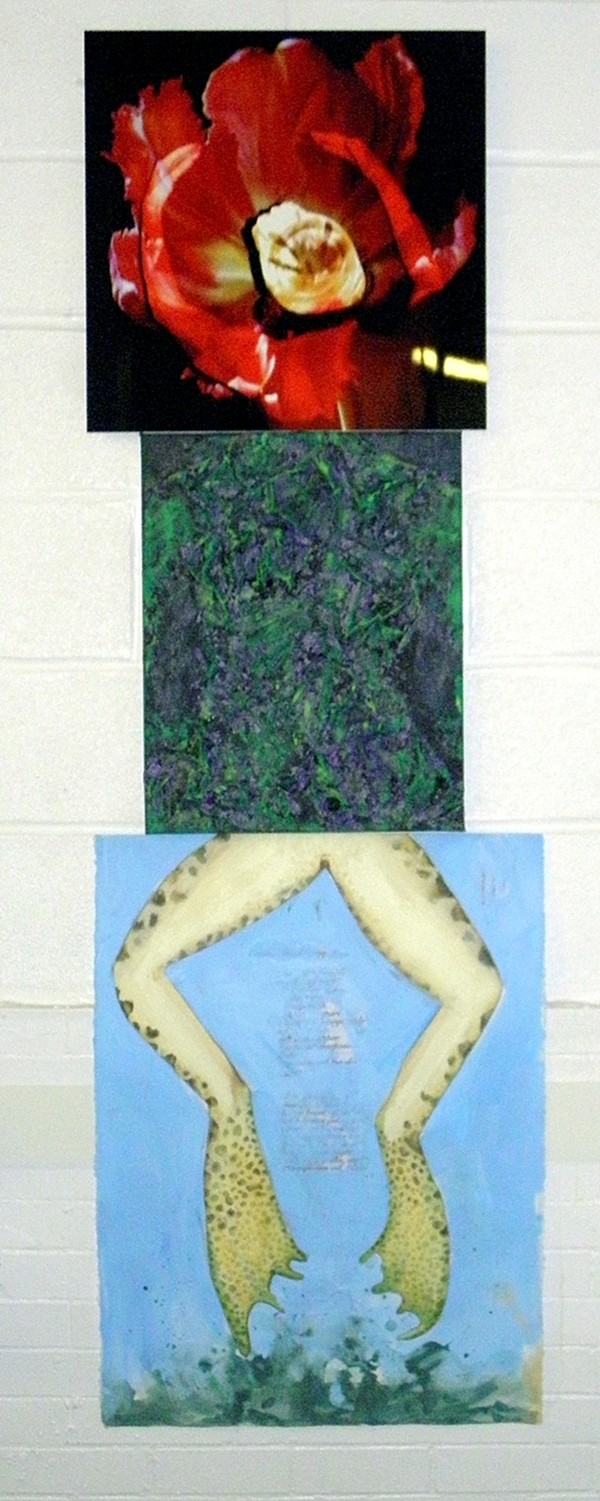
My model visited the show. In her realm, indeed!
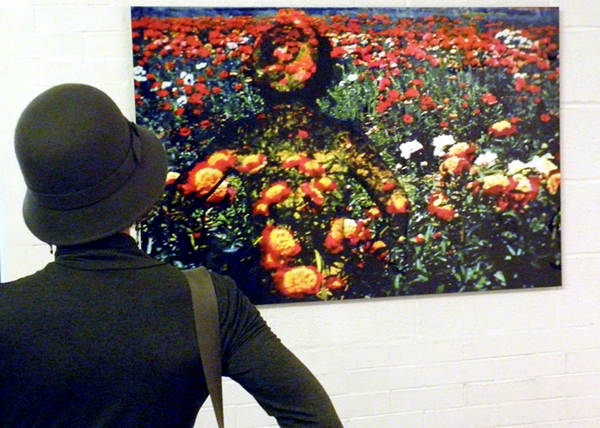
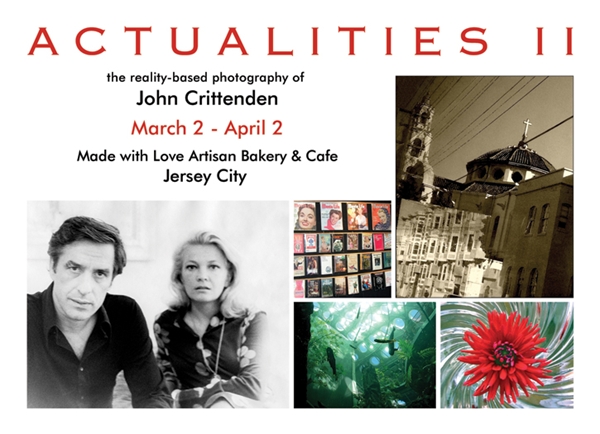
I’m pleased to be having my second solo show, less than a year after my first, at Made With Love Artisan Bakery & Cafe in Downtown Jersey City. Included in Actualities II are my portraits of John Cassavetes and Gena Rowlands, Liv Ullmann and Judy Collins, taken in the mid-1970s when I was a young journalist.
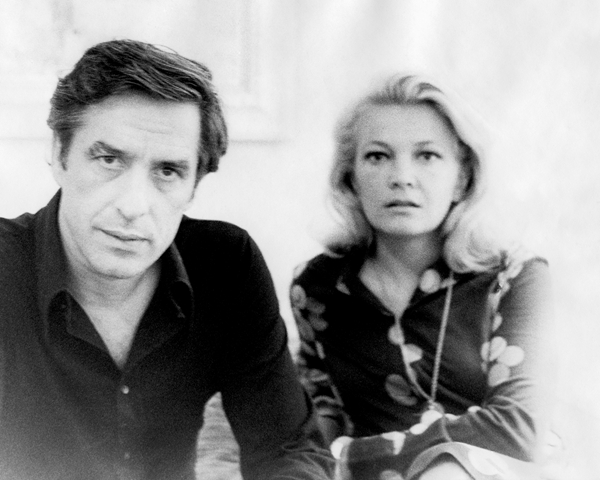
I was lucky to secure the 9 a.m. slot to interview John Cassavetes and Gena Rowlands the morning after “A Woman Under the Influence” — many consider it to be the greatest of the films they made together — debuted at the 1974 New York Film Festival at Lincoln Center. The interview was done in their hotel suite on West 58th Street, and they were still waking up when we began. He appeared first, and soon she came into the room and he presented her to me with admiration and pride in his voice. She seemed shy, almost fragile, and was even more strikingly beautiful than when acting on screen. At the end of the interview, I pulled out my Minolta 35mm film camera and took a few pictures without missing a beat. Having chatted for the better part of an hour, they were comfortable, weren’t asked to pose, and I didn’t use a flash. There was plenty of soft incandescent in the room and morning light was coming through the curtains. And so I captured the images of the director now remembered as the father of independent film in America, as well as a fine actor, and his actress wife, who is still beautiful and still making interesting movies today.
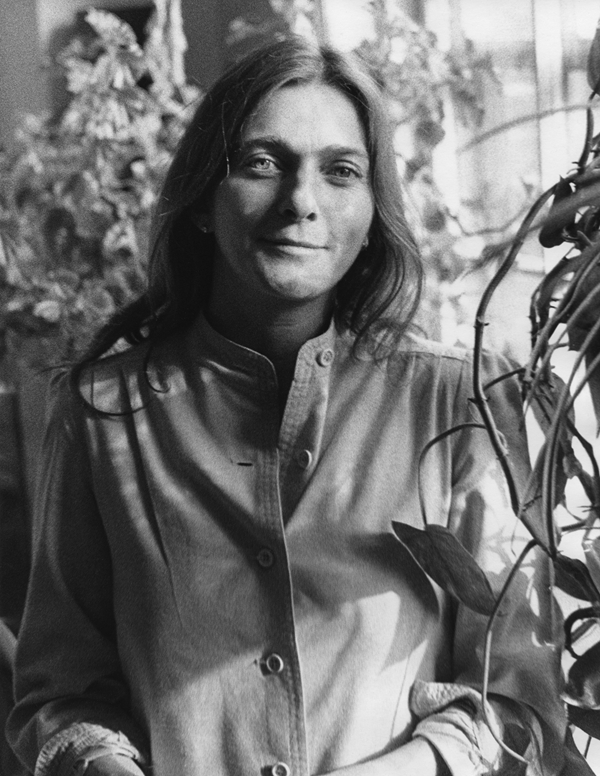
Judy Collins welcomed me into her apartment on Manhattan’s Upper West Side to discuss a film, “Antonia: A Portrait of the Woman,” which she produced and Jill Godmilow directed. The 1974 feature documentary tells the compelling but not widely known story of Antonia Brico, who in 1938 was the first woman to conduct the New York Philharmonic.
Born in The Netherlands, Brico grew up in California and was an accomplished pianist when she left high school, and already had experience in conducting. She graduated from the University of California, Berkeley, in 1923 and in 1927 entered the Berlin State Academy of Music, becoming the first American to graduate from its master class in conducting. She debuted as a professional conductor with the Berlin Philharmonic Orchestra in 1930. In 1934, back in the States, she was appointed conductor of the new Women’s Symphony Orchestra, which in 1939 became the Brico Symphony Orchestra after it admitted men. She conducted at the New York World’s Fair. But there were discouragingly few opportunities.
In 1942, she settled in Denver, Colorado and spent the rest of her life there, founding several local musical groups, conducting the Denver Symphony Orchestra, playing a major role in the city’s cultural life. She also taught piano, and this is where Judy Collins met her. She was one of Antonia Brico’s piano students.
I think it was extraordinary that Judy Collins, whose own musical career was going full swing in 1974, invested time and money in making a film tribute to a woman who was a hero in her life and who, she felt, had not gotten the artistic recognition she deserved in a field that was, and still is, predominantly male. And Judy Collins made sure the film was done right. “Antonia: A Portrait of the Woman” was nominated for an Academy Award in the documentary category. Antonia Brico died in Denver in 1989, at age 87.
After our interview, I photographed Judy Collins among her houseplants in her south-facing living room. Our visit was a particular thrill for me, of course, for hers was and is one of the great voices of my generation, and that interview was done only seven short years after her album “Wildflowers” was on every turntable in every college dorm room in America, including my own.
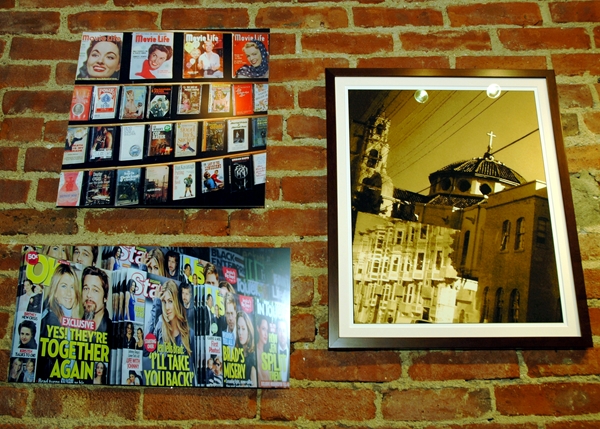
These photographs were taken in San Francisco, a city I dearly love. “In the City of Saint Francis” is on the right, a sepia-toned rendition of a single image. I think it has some feeling of the movement of the bus I was on when I took the exposure. I knew we would soon pass Mission Dolores, a tiny adobe church built in 1791 and the city’s oldest surviving structure, and I wanted to ready to snap it. I was shooting wildly, wondering what images I might get, kind of priming the camera. It turned out that this was the more interesting shot, a lucky shot totally unplanned. It’s a bit off-putting in color, with a phantom red digital zipper of words running through the middle, but when I took the color out and saw it in black and white I knew I had something. The lower left section of the image is the reflection in the bus window of the line of bay-windowed apartment houses across the street. The large church building with the cross on top is the modern basilica of Mission Dolores Church. Altogether, it is a vision of the city as it has looked, in this spot, for more than a half-century.
The subject is popular media in the photos at left, which are printed on metal and “float” on the wall, their corners as sharp as any print. Artists working in all mediums are fashioning comments these days on the supposed end of the print era, and these are mine. The relatively benign movie magazines from the 1940s and ’50s and the paperbacks with eye-catching covers displayed below them in the top photo were in the window of a used book store on Post Street. The magazines in the lower photo promise us, in January 2010, the latest “misery” in the lives of Jennifer and Brad and Angelina, none of which seems to have come to anything. I guess news was slow that week, the competition as cut-throat as ever. Whether such pages will still be viewed in one’s hands in 10 years time or will only be seen on screens I do not know. But I’m sure celebrity culture will continue to serve up the same formula “inside” exclusives. Inquiring minds will always want to know.
There are few things that signal spring as brilliantly as the Philadelphia Flower Show. I’m planning to arrive one afternoon this week only 90 minutes after leaving New York City by bus. I’ve made the trek each year for several years, but didn’t last year because the day I’d set aside turned out to be the worst travel day of the year in New Jersey. Blizzard conditions lowered the speed limit to 20 mph on the New Jersey Turnpike that afternoon. A big disappointment. Understand that normal snow falling, even pouring rain, is no problem, as the Convention Center is only a couple of blocks from Philadelphia’s Greyhound station. Never been? You should go! This year’s theme is Passport to the World, and the show runs through next Sunday. Here are some of the visions I saw in 2007.
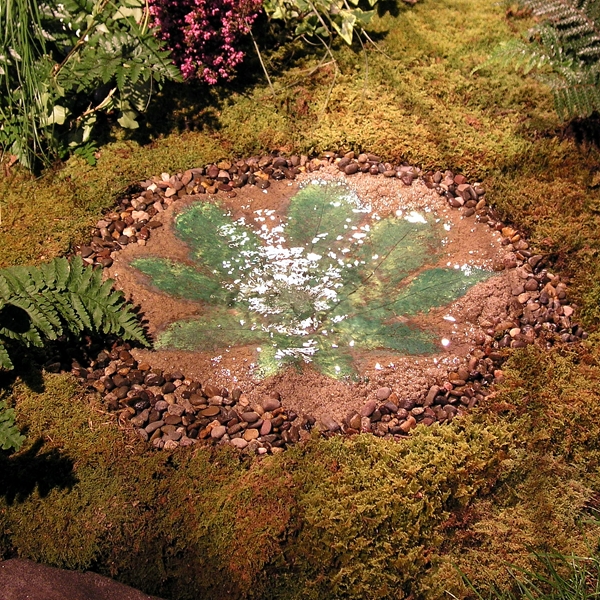
The show’s theme in 2007 was Ireland and its gardens. Each show has acres of displays by landscape firms from around the country, every one showing creative ideas. Above is a simple recirculating fountain with a totally natural look.
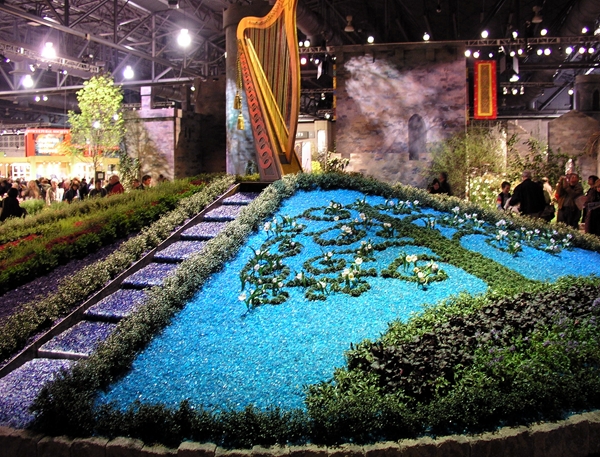
This massive display showed what can be done in the garden with recycled glass.
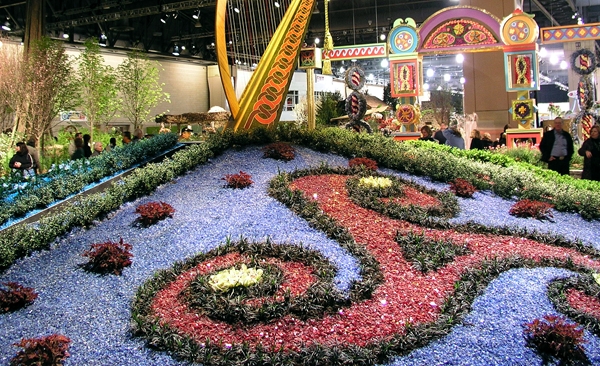
The harp and its mound greeted attendees upon entry, giving plenty of punch.
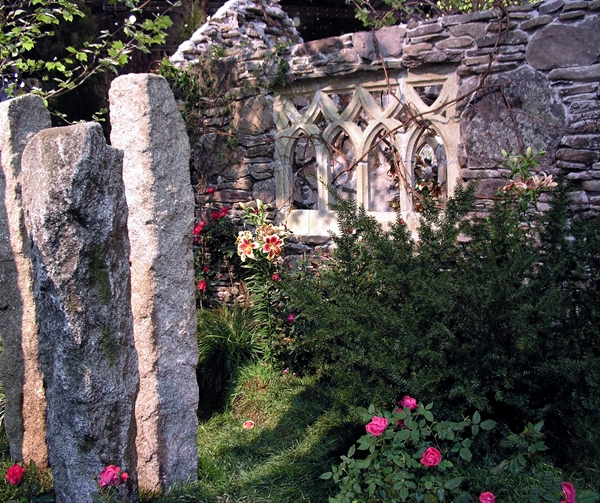
One of the most exquisite big displays was a stone church ruin with a rose garden.
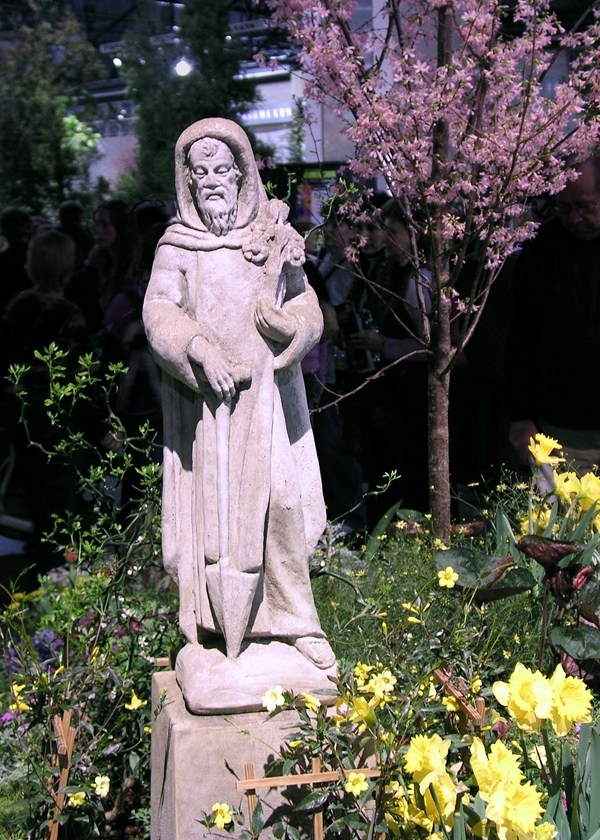
Saint Fiacre is the patron saint of gardening. He left Ireland in the 7th Century for France, where he joined a monastery. Granted a swatch of forested land, he asked for open land, and the legend says when he was told he could have as much land as he could till in one day that trees and bushes miraculously uprooted everywhere he touched the soil with his spade.
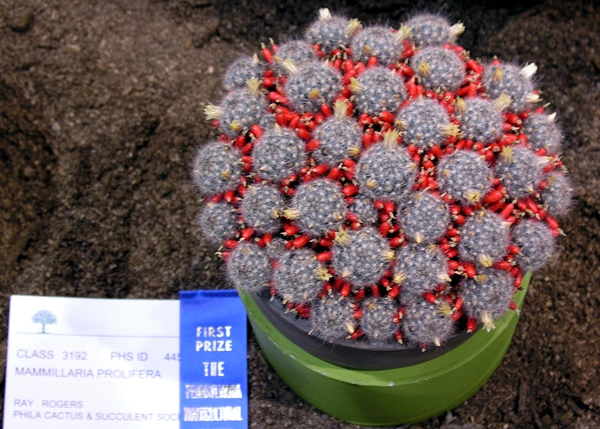
I’m including this for my friends who grow cactus. Yes, there’s a Philadelphia Cactus and Succulent Society. A good bit of the show is about competitions for best specimens, best arrangements, best table decorations, best room decorations, best miniature displays, etc. To be recognized by the judges of the Pennsylvania Horticultural Society is a great honor, and the organization works every day of the year in schools and in public education. Many displays teach conservation. The annual Flower Show is only one of the Society’s major activities.
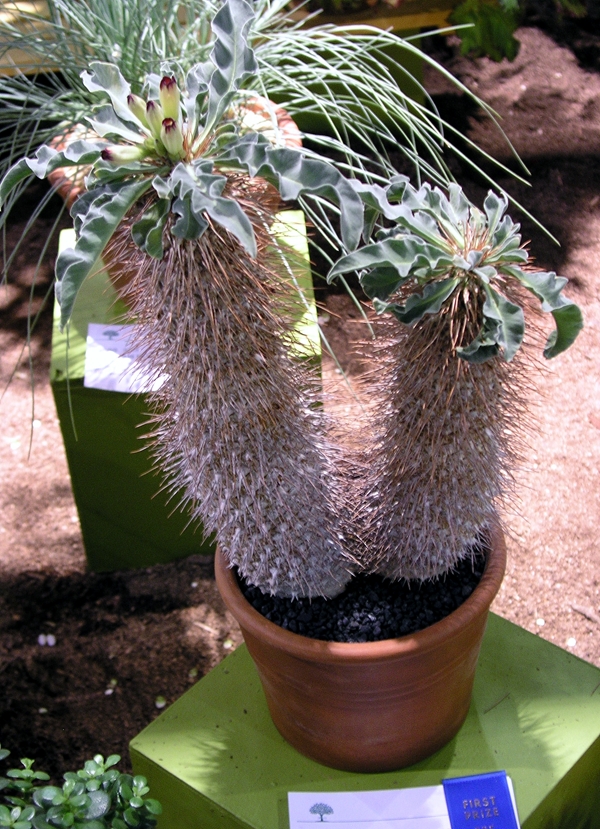
Another winner. There’s always a plant of a kind you’ve never seen before.
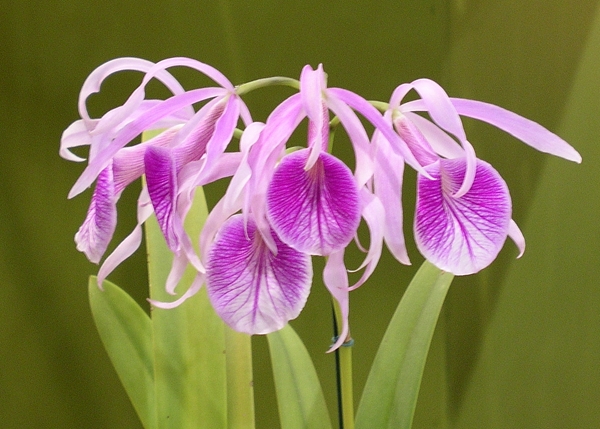
And there are always orchids of surpassing beauty.
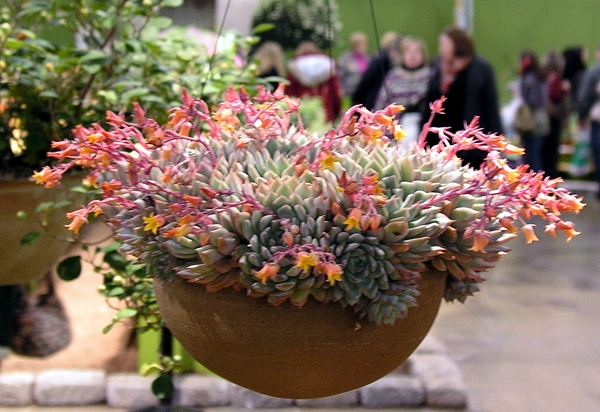
The individual plants that make the cut and are displayed can be viewed up close.
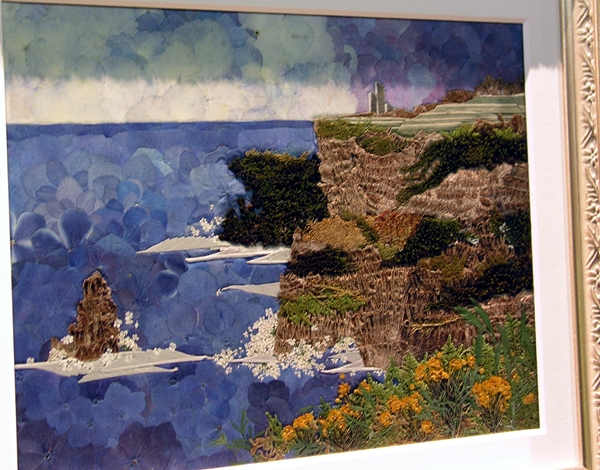
There’s also a competition for decorative arts utilizing plant materials, so there are many framed examples of pictures pieced together with petals and fibers.
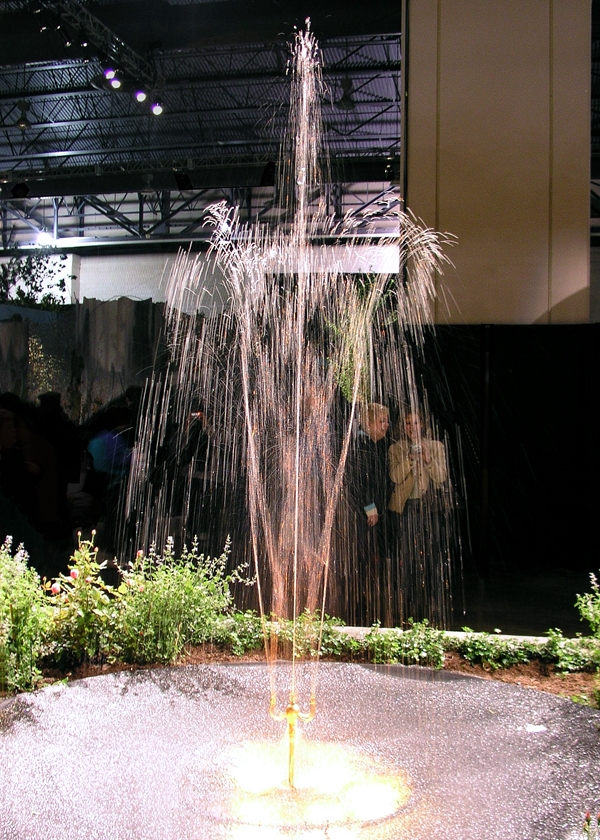
The view behind this shimmering fountain gives a sense of the size of the exhibition hall.
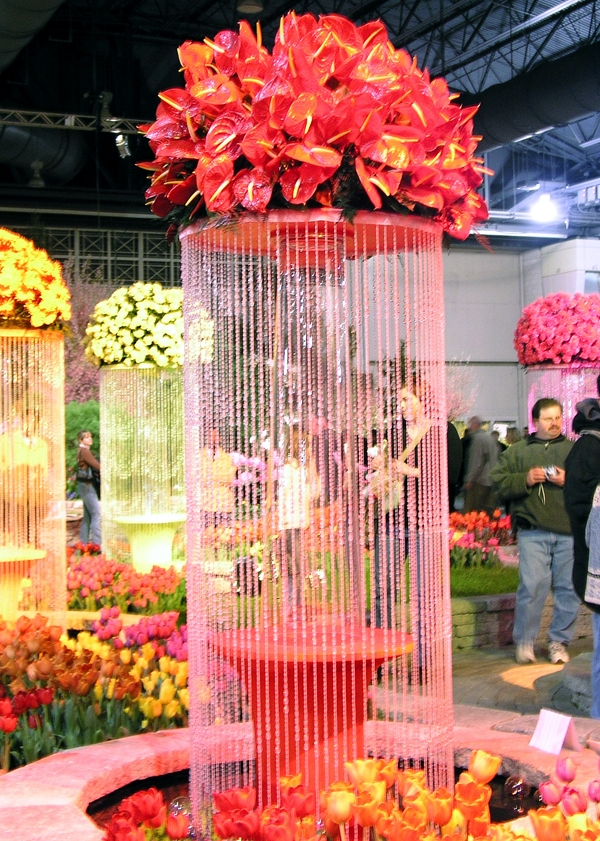
Too over the top for your taste? Keep moving. Something pleasing is just steps away.
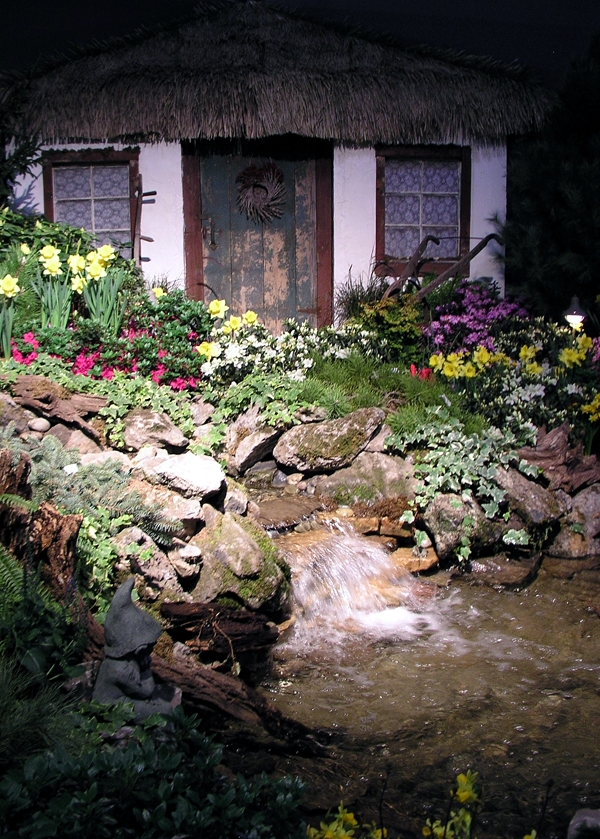
Perhaps a quaint Irish cottage with a splashing waterfall.
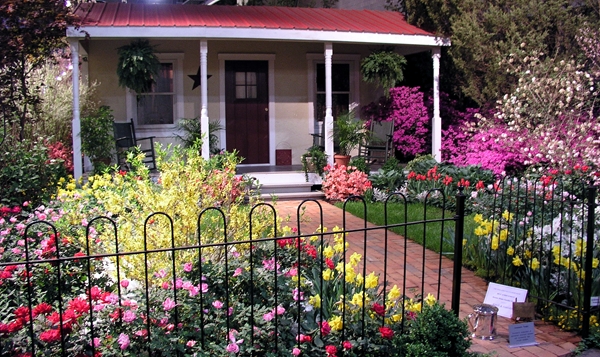
Wouldn’t you love a garden like this to welcome you home? It won a big silver cup.
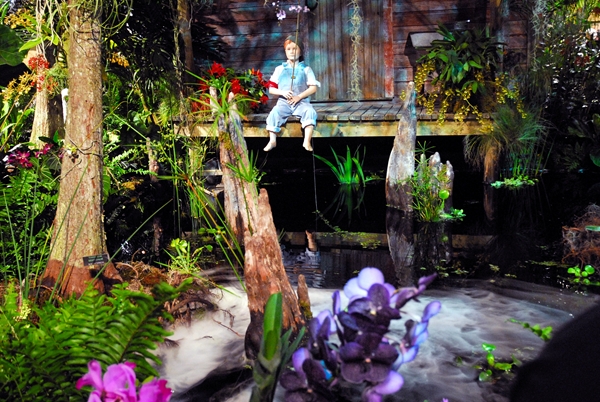
So, the first of three last photos — from 2008! The theme was Jazz and New Orleans, to give us a reminder of all the heritage that Hurricane Katrina threatened. This bayou scene had swirling fog moving on the water below the mannequin.
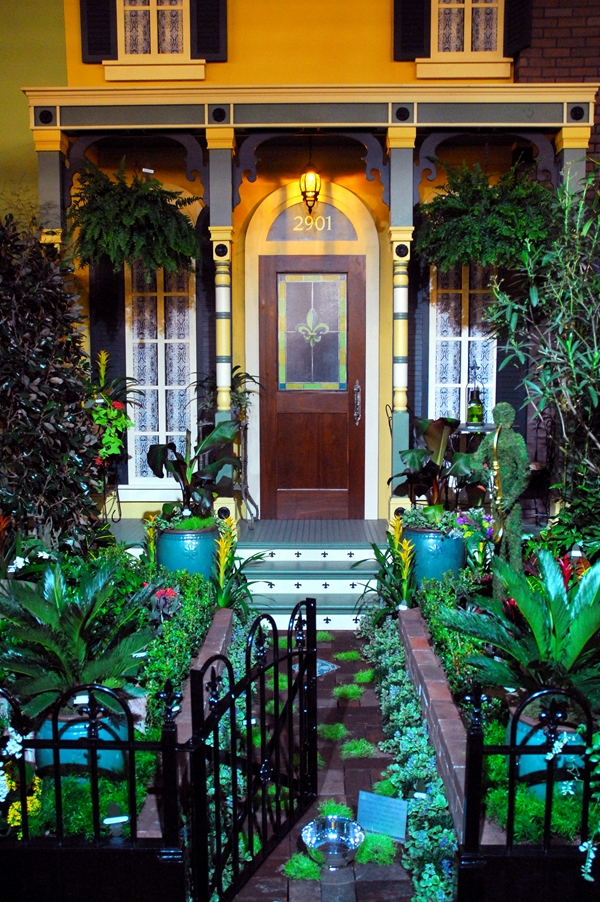
A silver bowl went to this New Orleans front yard display.
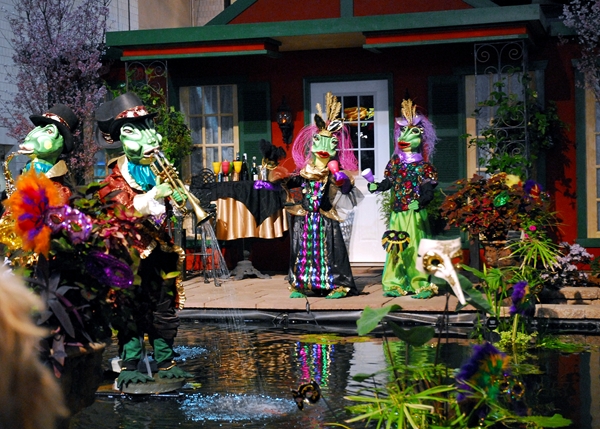
Frogs in their finery. Perhaps now you understand why I like to spend a late winter day in Philadelphia each year.
Maybe it’s because I grew up in Kansas, where it is the state flower, but I love every sunflower I see. And yet I’ve never tried to grow one; there’s no spot in my garden that’s right. Luckily, Jersey City Heights has lots of sunny front yards where they do grow tall. Just yesterday, I found there’s a 6-footer in front of a house across the street. Voila! Does seeing it make you as happy as it does me?
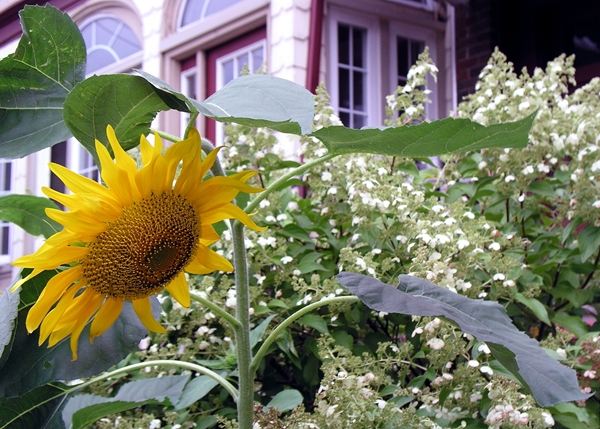
Often I emerge from my office about 4 and can’t resist pointing a camera at a bouquet from the garden caught in “perfect” light streaming through a living room window. Snap, snap, click, click, and in minutes friends around the world are admiring them in e-mails and on Facebook. These zinnias, grown from seed because sprouted ones never do well, were lighting up the room August 10 of this year. No flash, just available light, and if you’re wondering, yes I did some simple manipulation using a “brush” filter.
